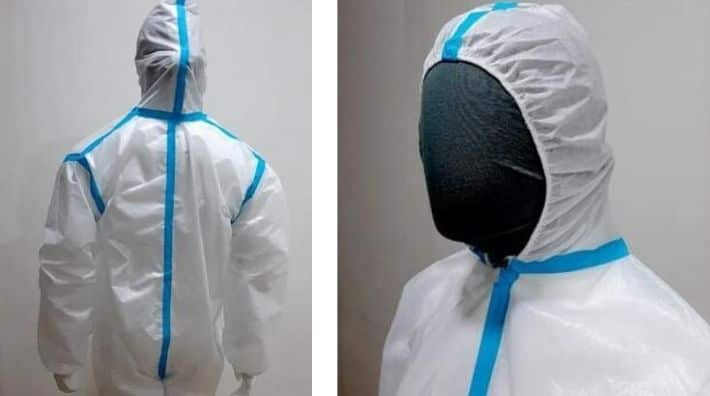Highlights
- India has become the second-largest manufacturer of PPE in the world.
- The Ministry for Textiles has ensured that the quality of these kits is of high level.
- Non-woven, as well as light-weight woven fabrics, are being used to manufacture the overalls.
"Within a very short span, India has gone on to become the second-largest manufacturer of PPE," Mr Rajesh Chopra, a textile technologist from IIT and a garment manufacturer from Mumbai whose factories now manufactures PPE, told SBS Hindi.
India’s Ministry of Textiles has taken steps to ensure that the quality and quantity of PPE overalls is up to the desired levels, Mr Chopra claimed.
“With the coronavirus pandemic, textile industry almost came to a halt. PPE is in great demand, so all the manufacturing units - big and small - went into PPE manufacturing. More than 500 thousand protective kits are now being manufactured per day in India,’ Mr Chopra said. “Earlier on there were a few units manufacturing PPE. Nobody had even heard of them. With the Coronavirus pandemic, the Government of India approached garment manufacturers to produce protective gowns,” Mr Chopra adds.
“Earlier on there were a few units manufacturing PPE. Nobody had even heard of them. With the Coronavirus pandemic, the Government of India approached garment manufacturers to produce protective gowns,” Mr Chopra adds.

Source: Supplied
One of the biggest challenges faced in manufacturing PPE kits has been the shortage of tape sealing machines that are required to seal the kit.
These had to be imported from China and Europe and some existing old machines in India were refurbished, according to Mr Chopra.
“This issue is also being resolved with the use of ultrasonic sealing waves. These seal edges just like we use stickers on T-shirts with an iron,’ Mr Chopra said. The PPE kit mainly consists of a suit which runs from ankles to the neck and fully covers the arms.
The PPE kit mainly consists of a suit which runs from ankles to the neck and fully covers the arms.

An Indian health worker wearing personal protective equipment (PPE) counsels the residents of a 'containment zones' after conducting the health check up Source: AAP Image/EPA/DIVYAKANT SOLANKI
"It is easy to slip on and zip up. With some, the shoes too get covered. Some have a hood or a shield, like an astronaut.
"In India, they are manufacturing lactic gloves which cost a bit less compared to Nitrile powder-filled gloves.
"Both varieties are now being manufactured in India. The fabric used can be non-woven, which works out cheaper but now the lightweight woven fabric is also being used to manufacture PPE kits," Mr Chopra added.




